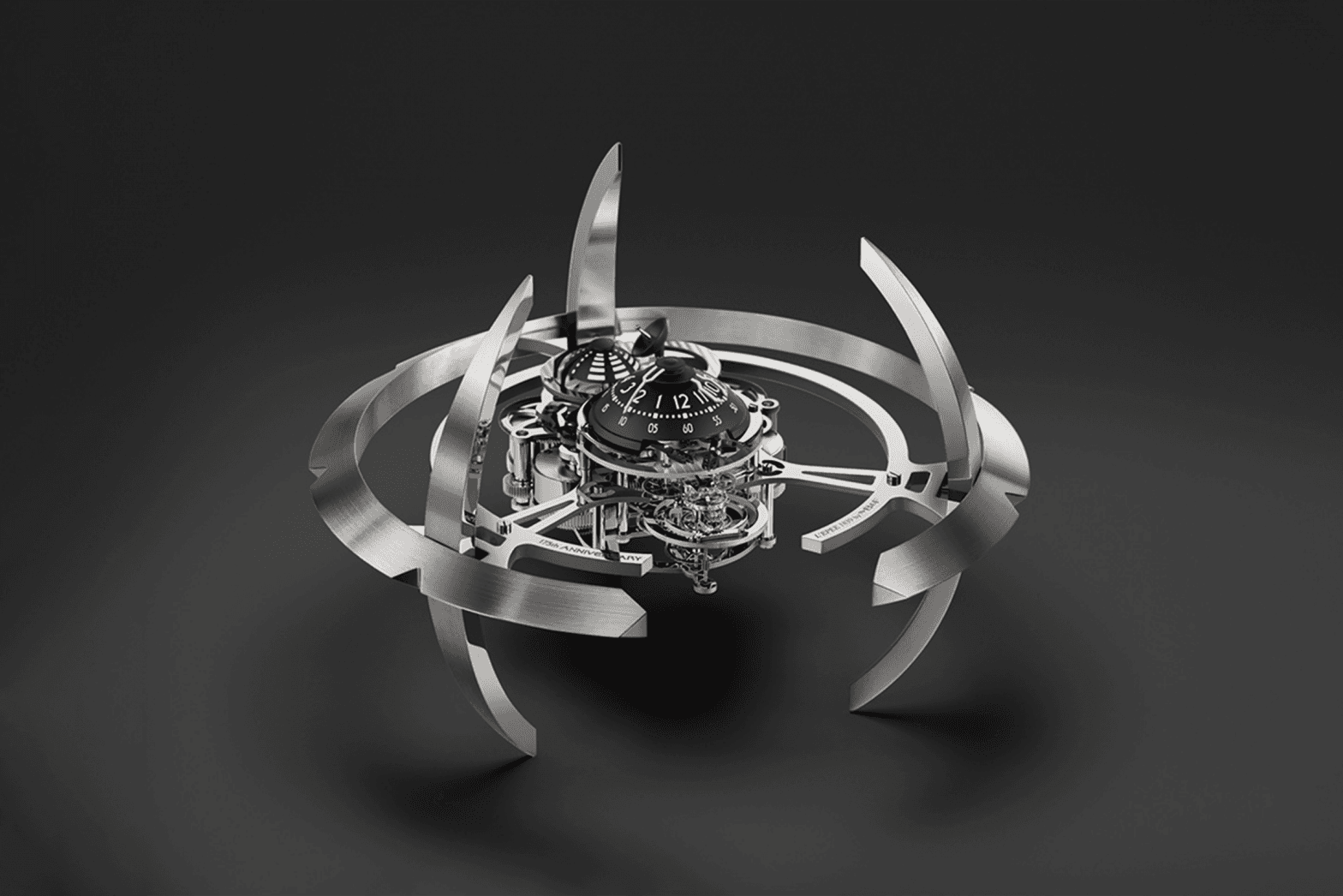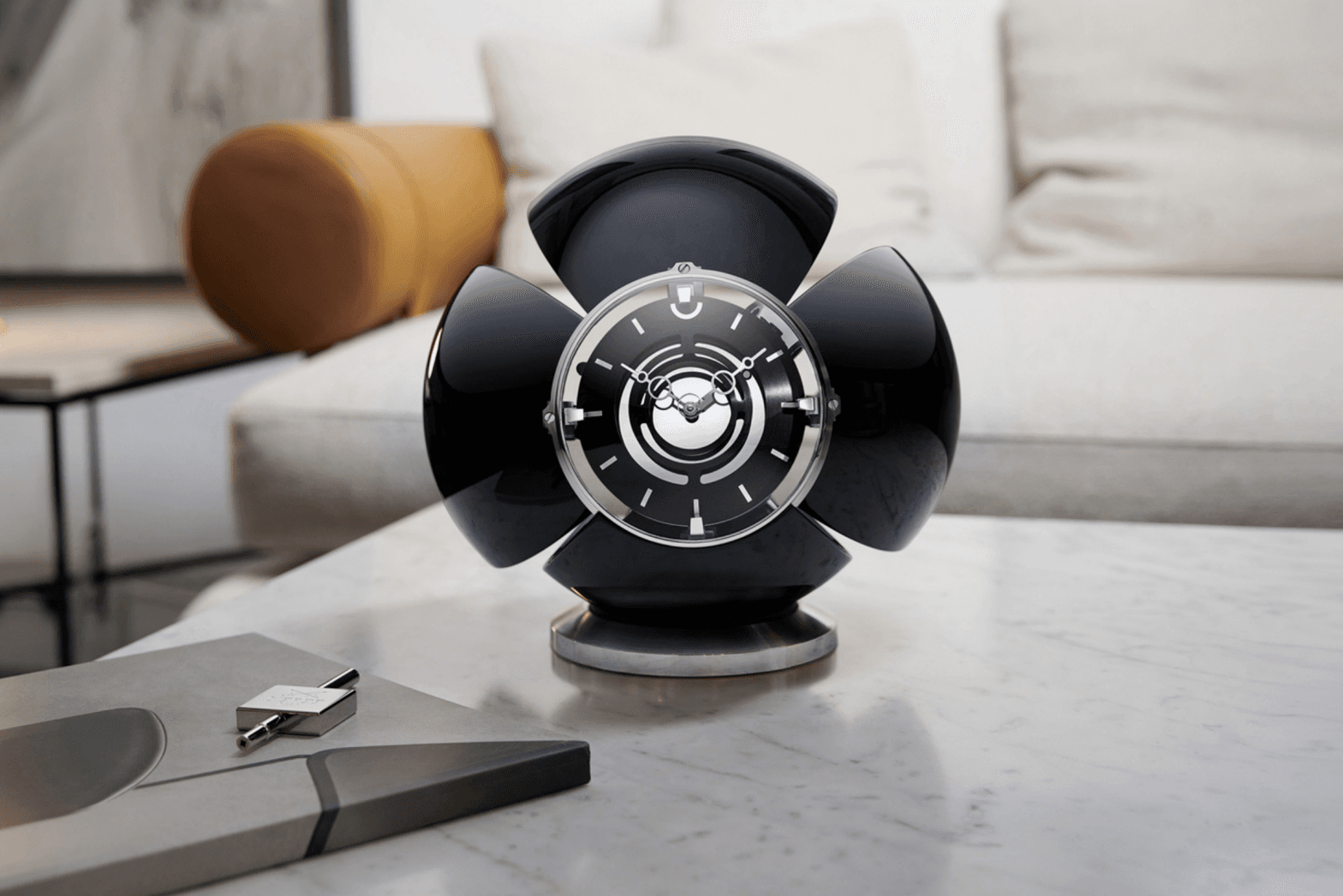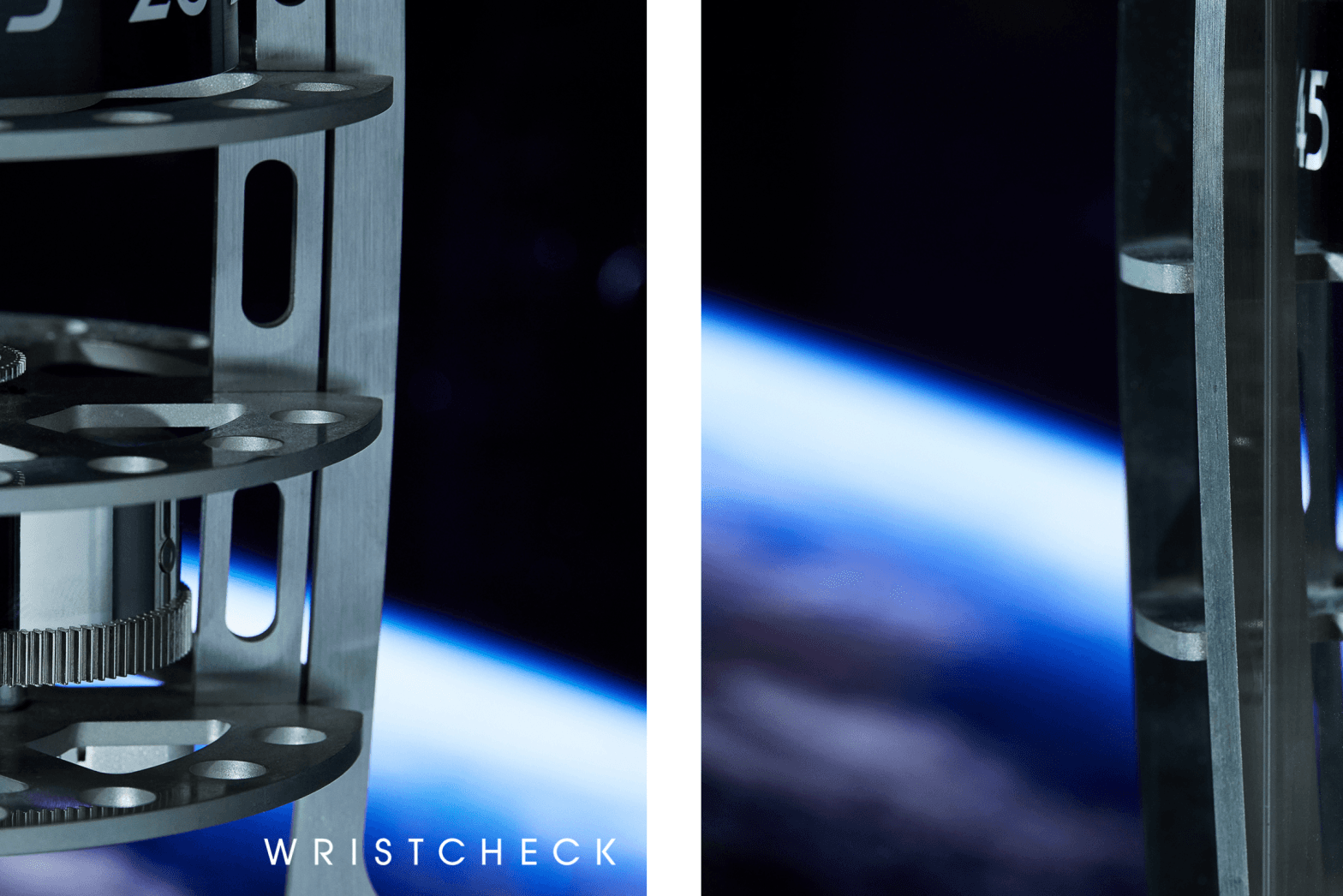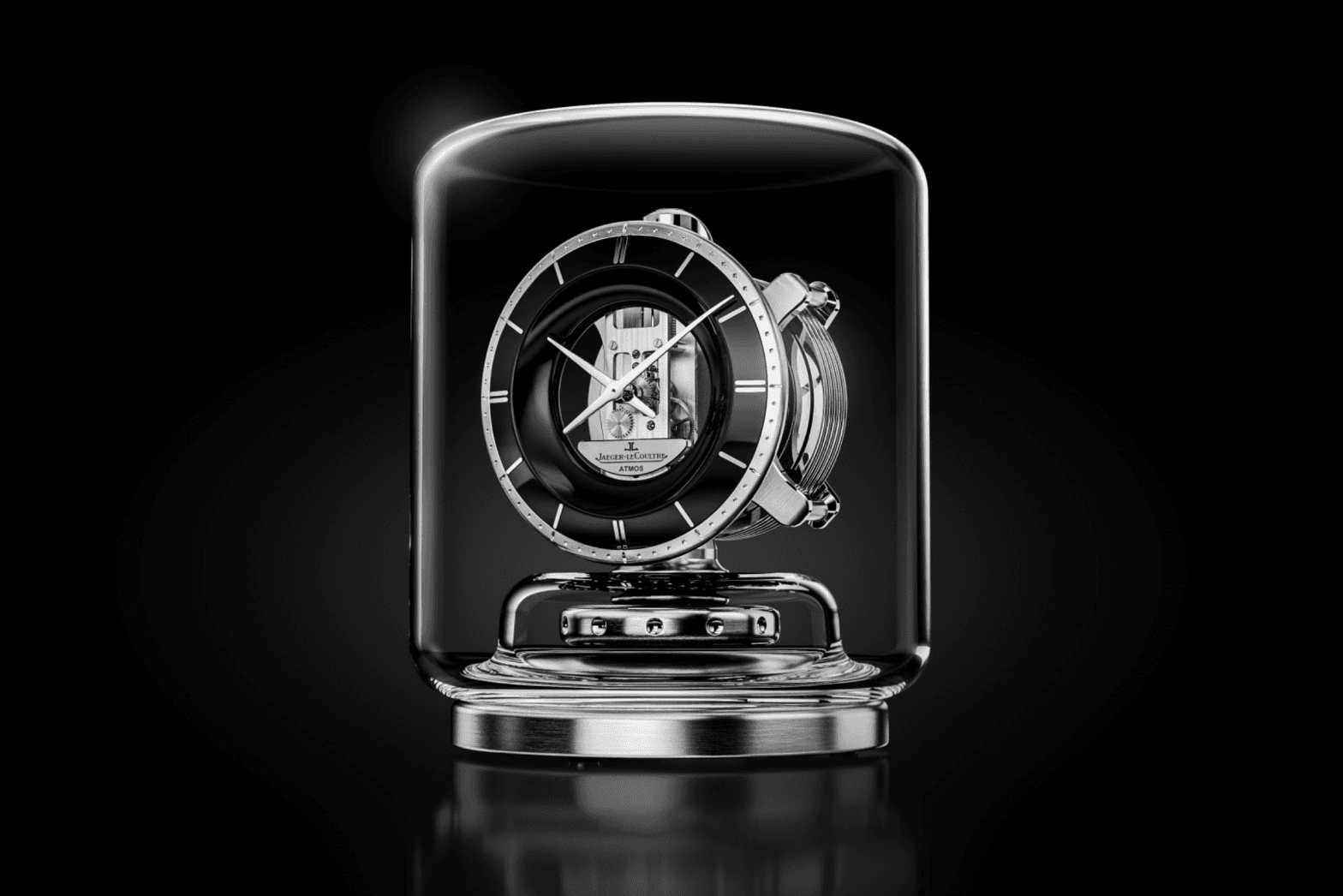
It is unlikely that clocks will ever compete with watches for mechanical timekeeping supremacy, but some brands like MB&F, Jaeger-LeCoultre and L'Epée 1839 are offering a rich experience on a completely different level to the wrist. We explore the contemporary clock-making scene that's bursting with creativity and innovation
Long before we had the convenience of carrying our timekeepers with us, we relied on clocks. While these large scale objects were the height of mechanical sophistication for generations past, modern life has meant that longcase clocks, mantle clocks — in fact, clocks of any kind are something of an endangered species. To be fair, the same argument can be made for mechanical watches, but it doesn't hold up. Far from fading away, watches have never been more popular, with a thriving collector scene, one that is very much in the mainstream of culture.
Not so long ago, the perceptions of horology was vastly different, with watches being lumped in with philately and numismatics. For many, this is where the art of clockmaking still resides, with popular perceptions being of ornate ormolu mantle clocks and the like. But, there a few signs that the culture of clock collecting is shifting. While classic designs have their place, a new generation of clockmakers and designers is coming to the fore, with impressive results.


If you're talking about contemporary clocks, the conversation quickly turns to the wild, eclectic, creative work of MB&F, and the fertile imagination of Max Büsser. From retro-futuristic creations like the Starfleet Machine, through to bio-organic creations like Orb and Medusa, MB&F has done a phenomenal job of combining a strong artistic vision and ingenious design with fine clockmaking technique, to great effect.

Of course, MB&F didn't do it alone when creating pieces like this. They worked with one of the most respected names in the clockmaking game, L'Epée 1839, who have, it should not surprise you, been producing horological devices, music boxes and more since 1839. we spoke to L'Epée 1839's CEO, Arnaud Nicolas on the state of the industry and the renewed interest in clocks. "I think there has always been a customer expectation for special, cool, fun, high-quality items. On the other hand, I think that the industry that manufactured these objects fell asleep and did not know how to adapt to the implicit expectations of the customers. Customers turned away from these objects for years because nothing matched their expectations. And as customers turned away, companies thought the market was gone when ultimately, it was just the consequence of a sleepy industry unwilling to take risks.



L'Epée 1839 hasn't been asleep. The brand has carved out a niche as a pre-eminent maker of special objects; "L'Epée is special because it makes art objects. An art object is, for me, an object that must inspire, evoke or even shock. It must have a message. To do this, we start with a blank page. We do not consider economic problems. We want to give our customers the best of the best. And so we develop a movement that will be a perfect fit for the design for each of our creations. We don't try to design around an existing movement like many brands do, but we create the movement that follows the design. We adapt form and function for all our creations. That's what sets us free. We start with the idea, the story. Then comes the design without the constraint of encapsulating an engine because the design of the engine is done at the same time as the design of the object. Then come the engineers to get the best out of the original idea. At L'Epée we are independent, which frees us from certain constraints. In return, this increases the risk, but our creations are well received by collectors and art lovers, allowing us to continue to create."

One spectacular example of a traditional maker, indeed one of the pre-eminent historical makers of marine chronometers, waking up to the possibility of cool clocks is Ulysse Nardin. In 2019 Ulysse Nardin debuted the UFO, a stunning, complex timekeeper that boasts a year-long power reserve thanks to six barrels. Sitting 26.3cm tall by 15.9mm across, this triple-timezone-telling clock impresses in its form, not just its function. Thanks to a hefty tungsten mass and an egg-like shape, the UFO can never be toppled, giving this desk-scale clock an element of kinetic art.
One of the most exciting things about contemporary clockwork is the scale and the form. This allows a range of expression and complication not possible within the more miniature scope of a wristwatch. However, Nicolas is quick to point out that while the output might look different, the fundamentals are essentially the same; "There are few differences in fact. Even in certain areas like chronometry or quality. Except that the difficulty increases exponentially with the surface area. The differences are mainly in the size of the objects. Watches are limited in size, whereas our objects do not have this problem. We can occupy the 3D space, which allows us a great deal of creative freedom. But here again it is more the philosophies of the brands that generate constraints than the field of possibilities."

Jaquet Droz, walks a middle path. The heritage brand is famous for its automata, such as the historic 'Writer', created in 1774. While unquestionably genius, this automata, in many ways, exemplifies the old world. The Time Writer is the spiritual successor of the 18th century original, expect here the complex array of cams and gears is presented as a monolithic stack which, when activated, writes out the time in an act of glorious redundancy.
Not every clock produced in recent years has been a work of avant-garde modernist architecture writ small. Some clocks combine classical aesthetics and contemporary technique to create something truly special. One great example of this is Patek Philippe's entry into the 2021 Only Watch charity auction. The famed Geneva maker raised eyebrows when their entry was revealed to be an extravagant desk clock, rather than the watch many were expecting. Reference 27001M-001 is inspired by a 1923 Packard-owned example, and is constructed in a traditional manner, with walnut inlays, vermeil detailing and plenty of sterling silver. The complicated mechanism is new and packs a perpetual calendar, deadbeat seconds and a 31-day power reserve into its compact frame. This one-of-a-kind clock sold for 9.5 million CHF.


Jaeger-LeCoultre is another classical maker who have continued to commit to the clock. In this case, with their famous Atmos clock. At its heart, Atmos is a mechanism that uses subtle fluctuations in temperature as a power source. Invented in 1928, the clock is as iconic today as ever, and Jaeger-LeCoultre is invested in building on the platform. Indeed, the brand put Atmos in pride of place at Watches and Wonders, presenting two contemporary takes; the Atmos Infinite and the Atmos Tellurium. The former is a deceptively simple time only affair, with an exposed torsion pendulum protected by a soothing glass cylinder. The Atmos Tellurium is an entirely more complex beast. A tellurium clock displays the time, but that's the least of it. This elaborate creation accurately represents the rotation of the earth around the sun, the phase of the moon, the orbit of the moon around earth, seasons, the passing of the zodiac. It's a clock that captures, in all its scientific complexity, our little slice of the solar system and places it on your mantle. It also does so in a resolutely current style, with a realistic earth and moon presented in a rotating disc inlaid with meteorite. On top of that, the actual form of the mechanism is captivating and again demonstrates how a clock can blur the lines between art and object.
It is unlikely that clocks will ever compete with watches for mechanical timekeeping supremacy, but brands like MB&F, Jaeger-LeCoultre and L'Epée 1839 are doing an outstanding job demonstrating that clocks don't have to be boring or dull and can, in fact, offer a rich timekeeping experience on a completely different level to the wrist.
